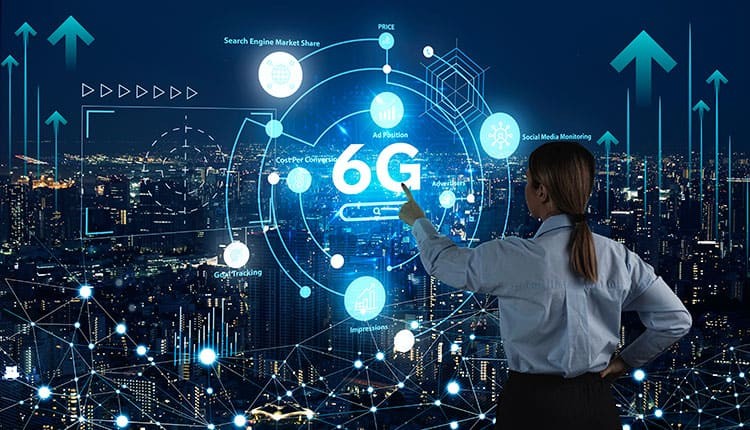
Introduction:
As the world continues to embrace the transformative power of 5G, the tech industry is already looking ahead to the next generation of wireless communication: 6G. While 5G is still in its rollout phase, researchers, engineers, and futurists are laying the groundwork for 6G, which promises to revolutionize connectivity, redefine industries, and unlock unprecedented possibilities. Expected to debut around 2030, 6G technology aims to deliver speeds up to 100 times faster than 5G, ultra-low latency, and seamless integration with emerging technologies like artificial intelligence (AI), augmented reality (AR), and the Internet of Things (IoT). This article explores the potential of 6G, its key features, and the challenges that lie ahead.
6G, or sixth-generation wireless technology, is the successor to 5G and represents the next leap in mobile communication. While 5G focuses on enhancing speed, capacity, and connectivity, 6G is expected to push these boundaries even further, enabling entirely new use cases and applications. It will operate in higher frequency bands, such as terahertz (THz) waves, which offer significantly more bandwidth than the millimeter-wave spectrum used by 5G. This will allow 6G to support data rates of up to 1 terabit per second (Tbps), making it possible to download entire movies in milliseconds.
Key Features of 6G:
- Blazing Fast Speeds: 6G is expected to deliver speeds up to 100 times faster than 5G, enabling near-instantaneous data transfer. This will be critical for applications like real-time holographic communication, immersive virtual reality (VR), and high-definition medicine.
- Ultra-Low Latency: With latency potentially as low as 1 microsecond, 6G will enable real-time interactions between devices, making it ideal for autonomous vehicles, remote surgery, and industrial automation.
- AI Integration: 6G will be deeply integrated with AI, allowing networks to self-optimize, predict user behavior, and allocate resources efficiently. This will lead to smarter, more adaptive networks that can handle complex tasks autonomously.
- Ubiquitous Connectivity: 6G aims to provide seamless global coverage, including remote and undeserved areas. This will be achieved through a combination of satellite networks, drones, and advanced ground-based infrastructure.
- Energy Efficiency: As the demand for data grows, so does the need for energy-efficient technologies. 6G will prioritize sustainability by optimizing power consumption and leveraging renewable energy sources.
- Advanced Security: With the increasing complexity of networks, security will be a top priority for 6G. It will incorporate advanced encryption, quantum-resistant algorithms, and AI-driven threat detection to safeguard data and privacy.
Potential Applications of 6G:
The capabilities of 6G will enable a wide range of applications that were previously unimaginable. Here are some of the most promising use cases:
- Holographic Communication: 6G could make real-time holographic communication a reality, allowing people to interact with lifelike 3D projections of others, even if they are on opposite sides of the world.
- Immersive AR and VR: With its ultra-high speeds and low latency, 6G will power immersive AR and VR experiences, transforming industries like gaming, education, and entertainment.
- Smart Cities: 6G will play a crucial role in the development of smart cities, enabling real-time monitoring and management of infrastructure, traffic, and energy systems.
- Autonomous Vehicles: The ultra-low latency of 6G will be essential for the safe operation of autonomous vehicles, allowing them to communicate with each other and their surroundings in real time.
- Telemedicine: 6G will revolutionize healthcare by enabling high-definition remote consultations, real-time monitoring of patients, and even remote surgeries performed by robotic systems.
- Industrial Automation: In manufacturing and logistics, 6G will facilitate the widespread adoption of robotics, AI, and IoT, leading to greater efficiency and productivity.
Challenges and Considerations:
While the potential of 6G is immense, there are several challenges that must be addressed before it becomes a reality. These include:
- Technological Hurdles: Developing the hardware and software required to operate in the terahertz spectrum is a significant challenge. Researchers must also find ways to overcome signal attenuation and interference.
- Infrastructure Costs: Building a global 6G network will require massive investments in infrastructure, including satellites, base stations, and fiber-optic cables.
- Regulatory Issues: Governments and regulatory bodies will need to establish standards and allocate spectrum for 6G, which could be a complex and time-consuming process.
- Security and Privacy: As networks become more advanced, so do the risks of cyberattacks and data breaches. Ensuring the security and privacy of 6G networks will be a top priority.
- Environmental Impact: The energy consumption of 6G networks must be carefully managed to minimize their environmental footprint.
Conclusion;
6G technology represents the next frontier in wireless communication, offering unparalleled speed, connectivity, and innovation. While it is still in the early stages of development, the potential applications of 6G are vast and transformative. From holographic communication to autonomous vehicles, 6G will redefine how we live, work, and interact with the world. However, realizing this vision will require overcoming significant technological, financial, and regulatory challenges. As researchers and industry leaders continue to push the boundaries of what is possible, 6G promises to usher in a new era of connectivity and opportunity.



